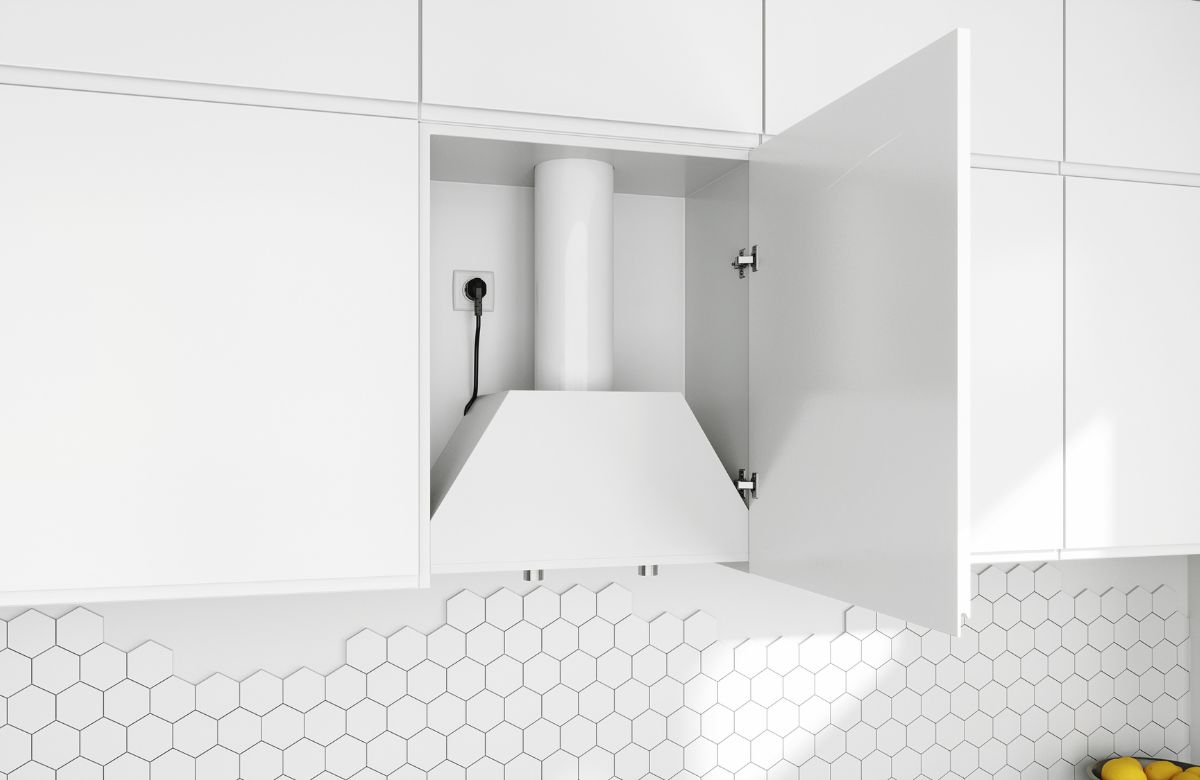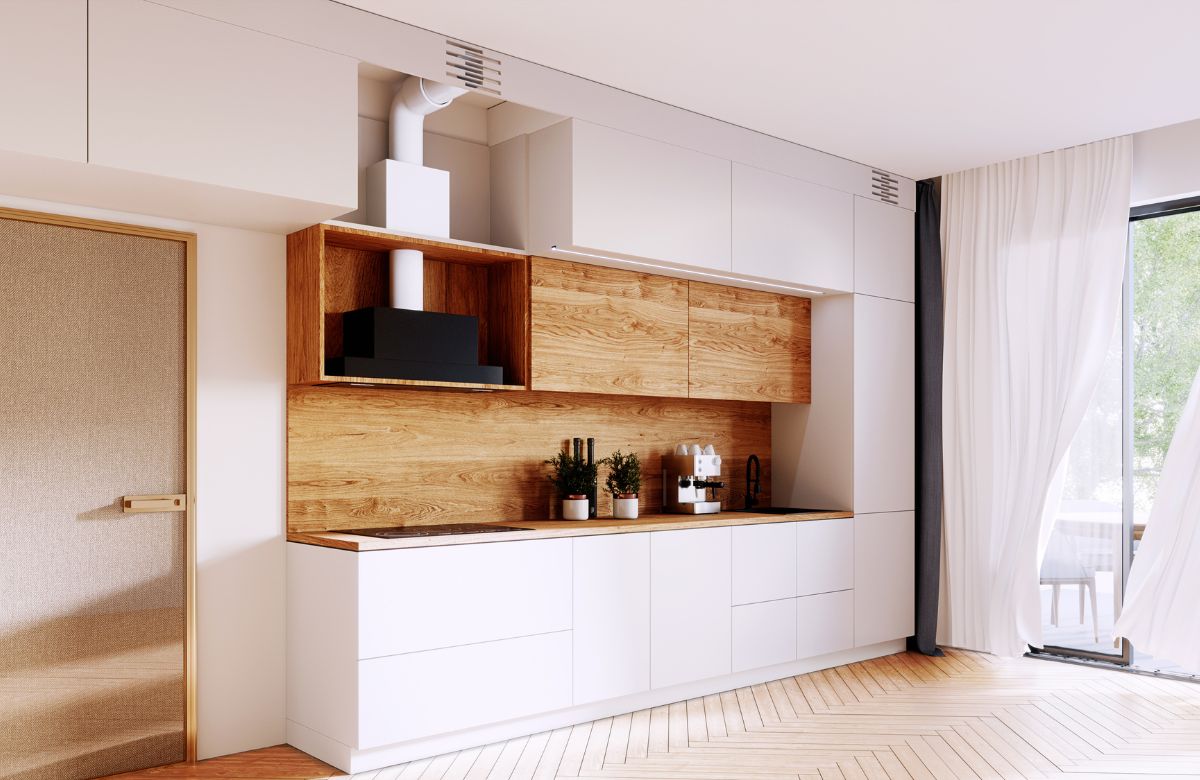Hood piping and appliance installation - 5 golden rules
Cooker hood ducting is essential if you want your kitchen hood to operate in extraction mode. Connected to ventilation, it will be quieter and more effective.
Kitchen cooker hoods can operate in two modes:
- extraction mode, where the hood is connected via ducting to a ventilation channel, and all impurities created during cooking are expelled outside the room and building
- recirculation mode, which is a closed-loop system – air is drawn in by the hood, unpleasant odours are neutralised, and moisture is absorbed by a carbon filter, so that the purified air is then returned to the room
We advise all our customers to connect the hood to ventilation, if possible. This will make it more effective and quieter. These are two features most valued by Polish consumers. To ensure correct installation, we have prepared six golden rules to guide you through the process.
-
Round Ducting Pipes for Cooker Hoods
For connecting the hood to the ventilation channel, it’s best to use smooth, straight round pipes made of plastic (PVC). The pipe diameter depends on the diameter of the hood’s motor outlet, typically 10 cm, 12.5 cm, or 15 cm.

Round ducts offer the least airflow resistance and are suitable for installation even in large spaces. They are made from non-flammable plastic that meets international building standards. These round pipes are lightweight and easily connect with other elements of the ventilation system. They can be cut to the desired length with a standard metal hand saw. PVC pipes do not corrode and provide reliable service for many years.
2. Rectangular Ducting Pipes for Cooker Hoods
In certain cases, flat channels are more suitable and convenient. This may depend on the hood's design or how it connects to the ventilation system. For instance, ceiling-mounted hoods often use flat channels. Similarly, worktop-mounted hoods, where the ducting is routed through the floor, require rectangular channels.
For example, the equivalent of a 15 cm diameter round pipe is a flat channel measuring 9 cm x 22 cm. Flat channels are also made from durable plastic and have the same properties and connection methods.
3. Cooker Hood Ducting – Avoid Unnecessary Bends
When connecting the hood to the ventilation system, avoid right-angle bends. Gentle 45-degree bends are best. The duct should be as short as possible, which helps the hood run more quietly and effectively. The minimum recommended duct length is 30 cm if the hood is installed just above or below the vent. Only then should you add an elbow bend to ensure the exhaust air does not re-enter the room due to motor power.
4. Soundproofed Ducting Pipes
A cooker hood operates with a motor that pulls contaminated air from the kitchen and expels it through the duct. This can cause some noise. However, we can influence how quietly the hood operates. Choose models that have a noise level of below 50 dB on their lowest setting. This means the extractor operates quietly.

If we want an even lower noise level, we can soundproof the extractor hood pipes (e.g., with mineral wool). Pipes are typically enclosed with a metal cover (known as a chimney), the length of which depends on the length of the pipe. The covers can be round, square, or rectangular.
5. Correct Pipe Diameter for the Extractor Hood
The pipe diameter should match the diameter of the motor outlet. We recommend avoiding any reduction in diameter, as this will increase noise and decrease efficiency. If a reduction is necessary because the chimney inlet is smaller than the hood’s outlet, only apply the reduction at the exhaust entry. The further from the motor the reduction, the better it is for the hood’s performance.
General Guidelines for Connecting the Hood to Ventilation
Besides using the correct pipe, other key guidelines for installing and maintaining the extractor hood will ensure effective and quiet operation. Here are the most important ones:
- Mount the hood at the correct height – the height depends on the hood type (angled wall-mounted, standard, island, ceiling, etc.) and the type of hob (gas or electric); mounting the hood too low can damage it, while too high a position may reduce its effectiveness
- Install the hood on a solid wall – concrete, breeze block, or brick; mounting on a plasterboard wall can make the hood noisier as such walls are hollow and may resonate like a guitar or violin body
- Regularly clean the hood, especially the metal filter, which captures grease and dirt; dirt accumulates on the aluminium mesh during cooking, and if neglected, it will clog, significantly reducing its efficiency. Metal filters can usually be washed by hand or in the dishwasher at a low temperature (preferably without other dirty items inside)
An extractor hood is purchased to clean the air from various substances generated during cooking. Steam, grease, dirt, dust, and other harmful particles resulting from combustion make the air unhealthy. To purify it and enjoy a healthy atmosphere in your home, ensure the extractor hood is correctly connected to the ventilation.
